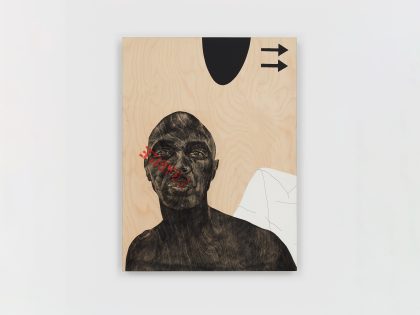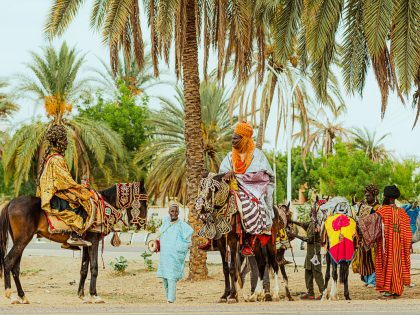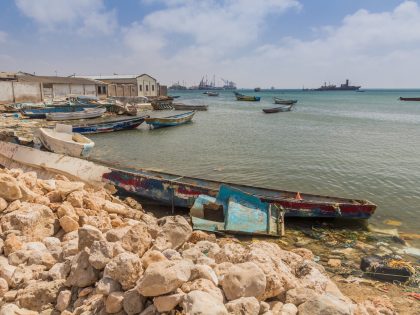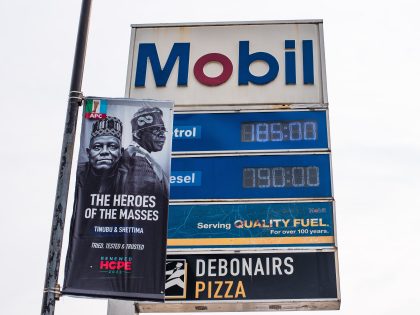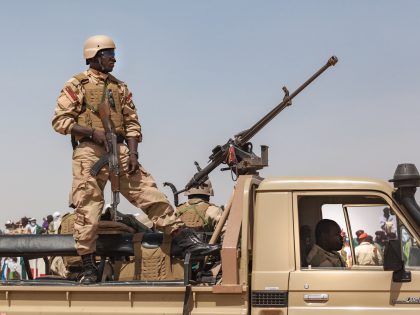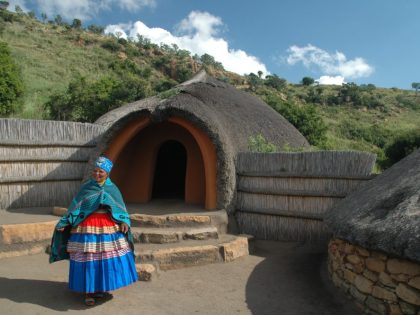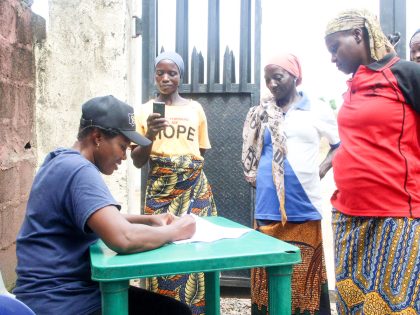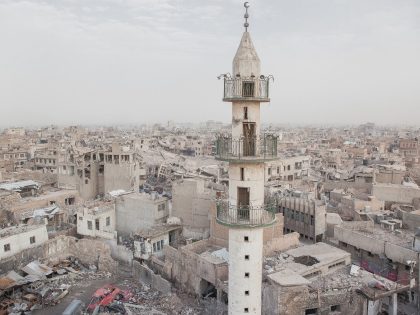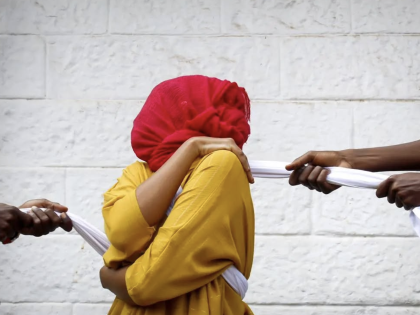A review Dak’art 2014 (II)
Halfway through my visit to the International Exhibition of this year’s ambitious edition of Dak’art: the 11th Biennale of Contemporary African Art, a tray of fragrant Thieboudienne, the classic Senegalese dish, was brought out into the courtyard of the Village de la Biennale, located in former television studios on the busy Route de Rufisque in Dakar’s industrial northern district. A few days after the close of the biennale’s well-attended opening week, the Village – the festival’s central hub – was nearly empty, save for my traveling companion and me and a host of biennale employees. As the midday sun beat down, we were delighted to be invited into the shade to share this meal of rice and fish communally from one platter. Given the theme of this year’s biennale, “producing the common,” you could be forgiven for assuming that we were participating in yet another edition of contemporary artist Rikrit Tiravanija’s Untitled (Free), in which a shared meal of Thai curry and rice becomes an artistic intervention. Our meal, instead, more spontaneously manifested the biennale’s mission to invite artists and the public to actively and collectively reflect on the values of the common.
In their inclusion of art that engages aesthetics and politics, curators Elise Atangana (artists from the Diaspora), Abdelkader Damani (artists from North Africa) and Ugochukwu-Smooth Nzewi (artists from sub-Saharan Africa) took inspiration from theorist Michael Hardt’s conception of the common as “the scene of encounter of social and political differences, at times characterized by agreement and at others antagonism.” They hope the diversity of voices and opinions inherent in the artworks come together to form what Édouard Glissant called a “Whole World” (Tout-Monde) in which all participate as equals.
The International Exhibition joined a constellation of other official installations spread out across Dakar. These included tribute shows to three historically significant Senegalese artists Mbaye Diop, Mamadou Diakhaté and Moustapha Dimé. In addition to this, the Musée Théodore Monod hosted an outdoor installation of contemporary African sculpture and an exhibition, “Cultural Diversity”, curated by Massamba Mbaye, which brought together the work of both African and non-African artists in order to promote dialogue and exchange rather than exclusion. Finally, the “Green Art” exhibition at the Université Cheikh Anta Diop invited international and Senegalese artists to revitalize an abandoned garden, creating a meditative, communal space within a dynamic campus that often serves as the site of student protest.
The exhibitions themselves brought together familiar works by internationally renowned artists including Wangechi Mutu, Candice Breitz and Simone Leigh alongside a range of exciting new discoveries. While much of the art was overtly political in its topical criticism of failed leadership and democracy, such as Prix de la ville de Dakar winner Tunisian artist Faten Rouissi’s Le fantôme de la liberté (Malla Ghassra) (2012), I preferred quieter work. Olu Amoda – an established Nigerian artist who shared the biennale’s Grand Prix Léopold Sédar Senghor with Algerian artist Driss Ouadahi – created Sunflower (2012). Using nails recuperated from the shipping containers that import luxury goods into Lagos for a consumerist elite, this work appeared to be a subtle commentary on Nigeria’s neoliberal tendencies and lack of industrial agency. London-based Ghanaian filmmaker John Akomfrah’s poetic film Peripeteia (2012) moved me with its ethereal imagery and enthralling narrative recuperating and imagining the lives of an anonymous black man and woman immortalized in 16th century engravings by Albrecht Dürer that resonates as a contemporary meditation on displacement.
Paris-based Algerian artist Kader Attia’s Indépendence Tchao (2014) responded to the architectural fabric of Dakar itself. In a work created specially for the biennale, the artist created a model of the modernist Dakar Independence Hotel using metal lockers reclaimed from an abandoned building in Algiers, in order to create a monument to failed revolutionary projects across Africa. While the biennale suffered from the expected mishaps of such a large-scale project, including non-functional video projectors past the opening week and undelivered artwork (Ethiopian-American artist Julie Mehretu’s work never showed), an improvisatory attitude contributed to a pervasive sense of community involvement. American artist Radcliffe Bailey created an installation from local coal when his work failed to arrive on time.
The Senegalese government has historically played a critical role in Dak’art’s conception and funding, a robust program of 266 independently organized ‘OFF’ events and exhibitions throughout Dakar, nearby Saint Louis and other locations around Senegal help to decentralize the biennale and bring it further to its goal of “producing the common.” This multiplicity of voices has new significance in light of last month’s shut-down of Raw Material Company, the internationally renowned contemporary art space in Dakar. Raw Material’s contribution to ‘OFF’ was a groundbreaking exhibition co-organized by Koyo Kouoh and Ato Malinda called “Precarious Imaging: Visibility and Media Surrounding African Queerness” exploring homosexuality in Africa. The government of Senegal, where homosexuality is prohibited, suspended all other Dak’art exhibitions dealing with the subject. As this edition of Dak’art draws to a close, we are reminded of the real controversies that art brings to the surface.











